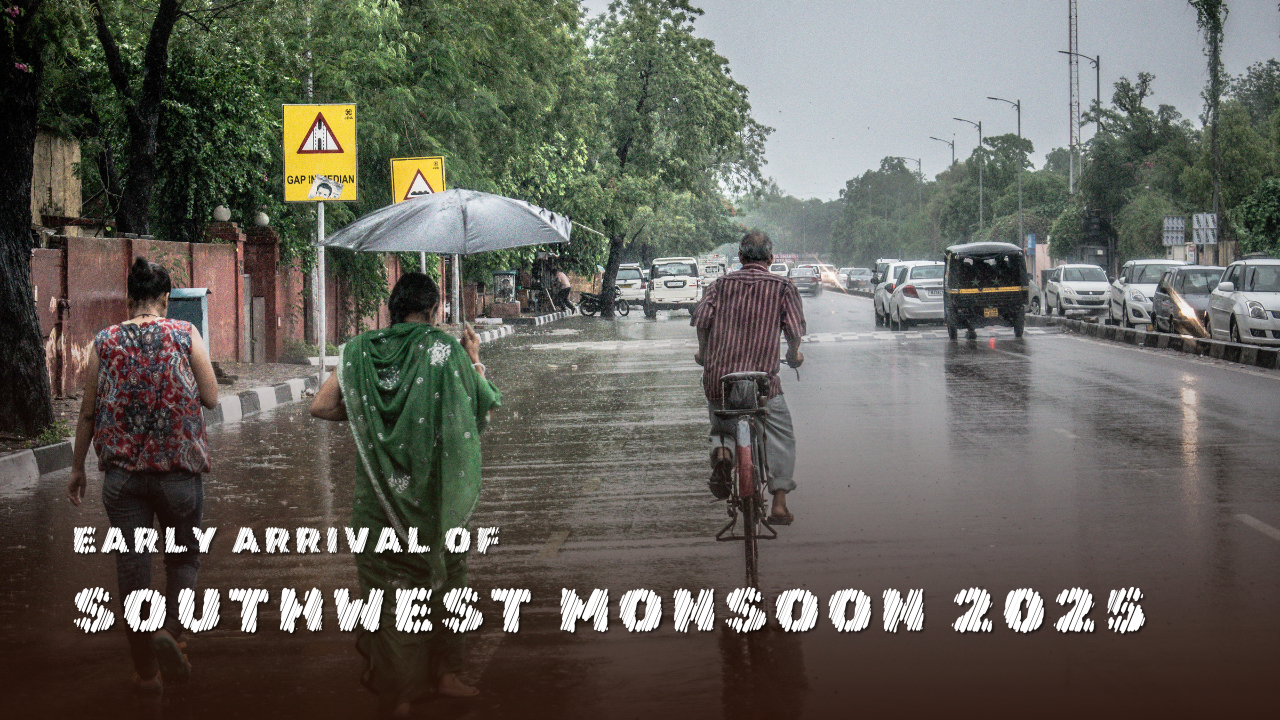Font size:
Print
India’s Water Crisis
Context:
India’s water crisis, driven by climate change and unsustainable practices, is reaching a critical point.

Current Status:
- High Water Stress: India holds about 18% of the global population but only 4% of the world’s water resources, making it one of the most water-stressed nations (NITI Aayog Report, 2017).
- Groundwater Depletion: India is the largest user of groundwater globally, accounting for nearly 25% of the world’s total.
- Projections indicate that many cities could run out of groundwater by 2030.
- Low Per Capita Water Availability: Per capita water availability is around 1,100 cubic metres (m³), significantly below the international water stress threshold of 1,700 m³ per person and nearing the water scarcity threshold of 1,000 m³ per person.
- Uneven Distribution: Monsoon rains are vital, yet their erratic patterns exacerbate water stress in many regions.
- Limited Access: More than 50% of the Indian population lacks access to safe drinking water, and about 200,000 people die each year due to water-related diseases.
- Growing Demand-Supply Gap: Rapid urbanisation and industrialisation are straining water resources, widening the gap between demand and availability.
Causes of Water Scarcity:
- Rising Demand: Population growth and rapid urbanisation place immense pressure on water resources.
- Urbanisation was one of the factors contributing to the Chennai water crisis in 2019.
- Overexploitation: Excessive groundwater extraction for agriculture and industry depletes aquifers faster than they can be replenished.
- Pollution: Industrial waste and agricultural runoff contaminate surface water sources, making them unfit for consumption.
- Poor Infrastructure: Leaks in pipes and canals waste significant amounts of water, further stressing supplies.
- Climate Change: Unpredictable weather patterns disrupt monsoons, worsening water scarcity.
- Inefficient Water Management: Poor water management practices, including inadequate infrastructure for storage and distribution, lead to significant water losses.

Measures to Address Water Scarcity:
- Circular Water Economy: Maximising water utility and reducing reliance on external sources.
- Water-Saving Techniques: Implementing efficient methods like drip irrigation in agriculture.
- Pradhan Mantri Krishi Sinchayee Yojana (PMKSY) focuses on efficient irrigation practices with varying centre-state share ratios depending on the region.
- Public Awareness Campaigns: Educating people on water conservation and sanitation practices.
- The Ministry of Jal Shakti was established in May 2019 to consolidate functions related to water management.
- Infrastructure Upgrades: Improving water treatment plants and distribution networks.
- Sustainable Water Management: Adopting integrated water resource management that considers all stakeholders.
- National Water Mission (NWM) aims to conserve water, minimise waste, and ensure more equitable distribution.
- Public-Private Partnerships: Encouraging collaboration between the government, businesses, and NGOs to accelerate progress.
- Community Participation: Empowering local communities to effectively manage water resources.
- It has proven successful in initiatives like Niti Aayog’s Aspirational District Programme.
- Technological Solutions: Exploring desalination, wastewater treatment, and rainwater harvesting technologies to create new water sources.
Conclusion
In the landmark case Narmada Bachao Andolan vs Union of India (2000), the Court affirmed that water is integral to the right to life under Article 21 of the Constitution. Thus, ensuring access to water is a collective responsibility. Immediate and collective action is necessary to address the water crisis. By adopting sustainable practices, promoting water conservation, and investing in infrastructure, India can work towards a water-secure future.
Global Initiatives
- KnoWat (Knowing water better): FAO is implementing this project to enhance water governance processes in Rwanda, Senegal, and Sri Lanka.
- Warka Water Technique : It is a vertical structure designed to harvest potable water from the air.



